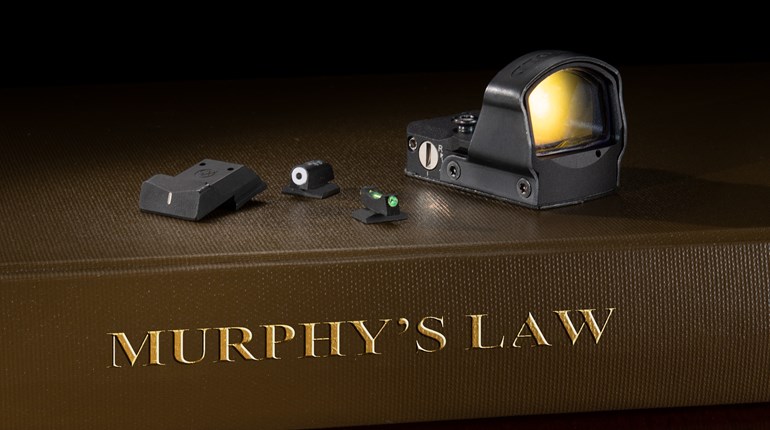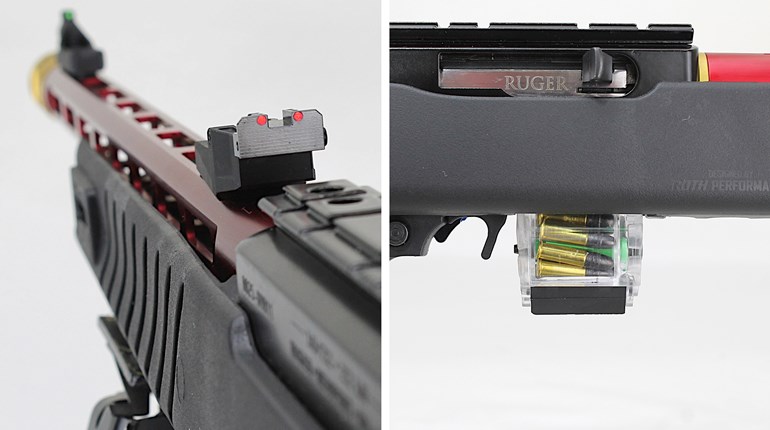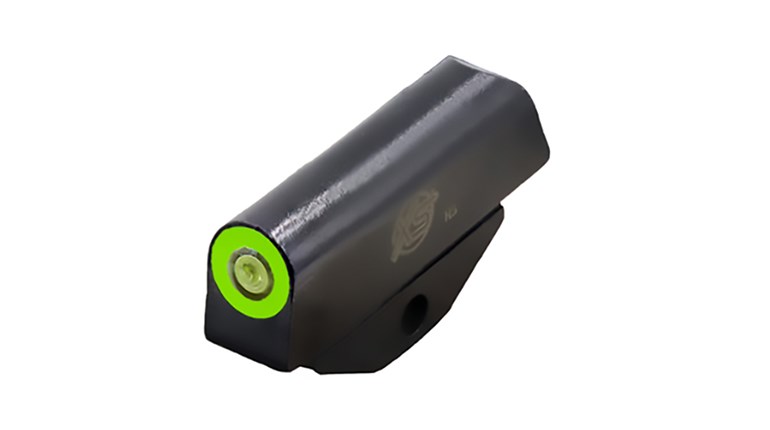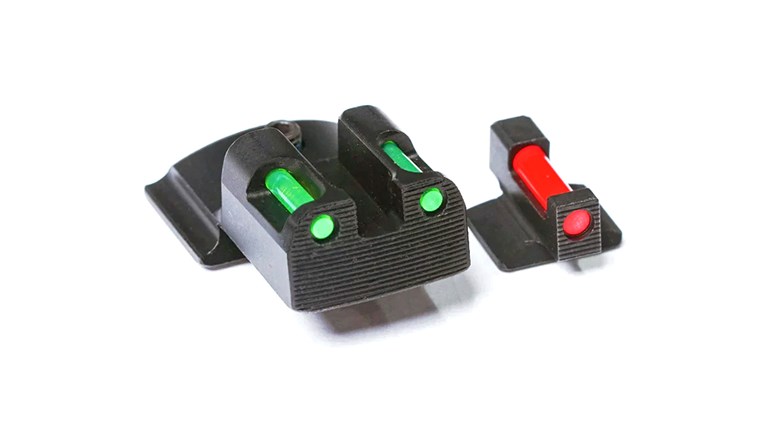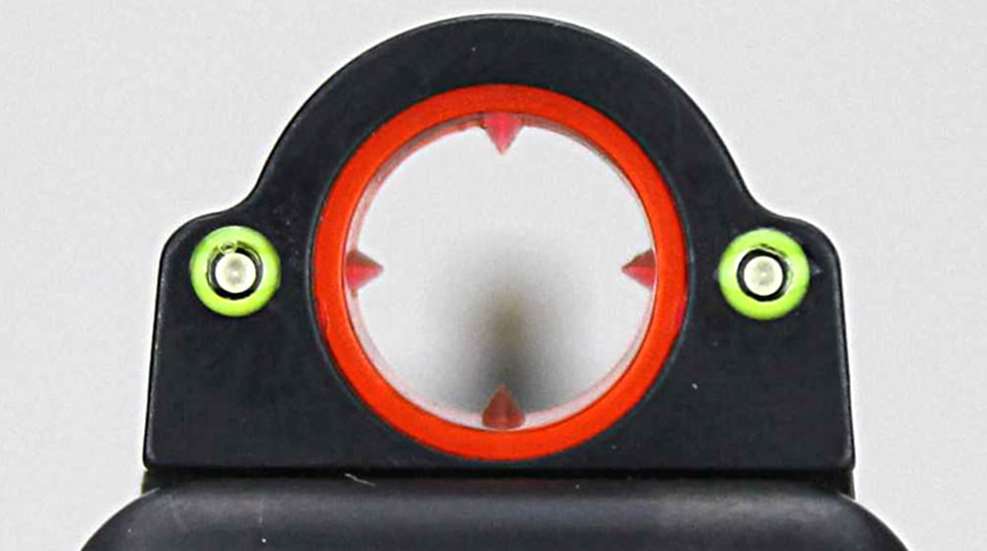
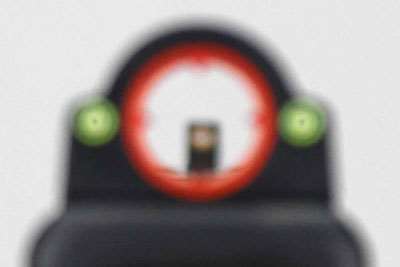
Now that I’m edging closer into that “old guy” classification, it isn’t so funny; there’s no denying that my eyes are not picking up the sight picture as quickly as they did at age 30. The problem is presbyopia, the loss of the ability to focus at closer distances, and it is something nearly everyone will experience with aging—there is no prevention or cure. Just as with other parts of our bodies, our aging eyes begin to lose flexibility, making it difficult to focus, for example, on pistol sights and barrel mounted rifle sights.
Doing the bifocal-bobblehead dance is not a good option for NRA Action Pistol, IDPA, IPSC or other fast shooting, so what can we do other than hang up our guns? Perhaps we can borrow sights from High Power and Vintage Military Rifle competition. Specifically, why not try mounting aperture rear sights on our pistols?
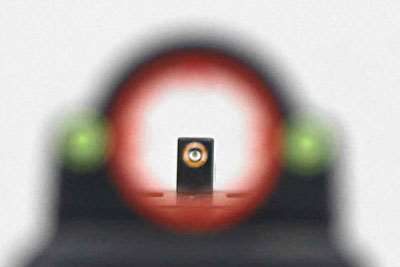
Updating Old Technology
Aperture sights on pistols is not a new idea, and in the past they have not performed well enough to become common. What makes the Snake Eyes different is the use of what appears to be a fiber optic ring. According to Rohlfsen the material is not a true optical fiber, but as far as the eye is concerned, it may as well be. The brightly colored orange or green ring seems to allow the eye to pick up the sight aperture somewhat faster than a blued metal ring. The ring’s inner edge is also “indexed” at 12, 3, 6 and 9 o’clock with pointed protrusions to aid in centering. Because it is intended as a combat sight, both front and rear sights have tritium dots for low light conditions. And the aperture sight is very rugged, as Rohlfsen demonstrated by hammering it against a steel countertop and then using the countertop to vigorously cycle the pistol’s slide a few times.
Aperture sights on rifles work because our eyes and brains want to see the target in the center of the aperture. We attempt to align aperture sights with the target naturally. And because we look through an aperture sight, not at it, we don’t need to focus on it. But aperture sights on rifles are only inches from the eye; will they still work when held at arm’s length on a pistol?
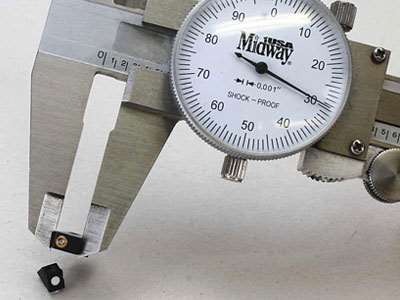
Test and adjust
Just as with any other equipment change in competition, it takes time to adjust to something new, and the Snake Eyes is no exception. Aligning the three sight dots is fine for good eyesight, though it obscures the target and raises the top edge of the front sight above the center of the aperture. Holding the top of the front sight post in the aperture center may work better for High Power Service Rifle and Garand/Springfield rifle competitors accustomed to that sight picture. Also, presbyopia makes attempting to align the (blurred) dots just as time consuming as aligning post-and-notch sights, so the “Service Rifle sight picture” is pretty much required to take advantage of the Snake Eyes’ benefit of speeding up (blurred) front sight acquisition.
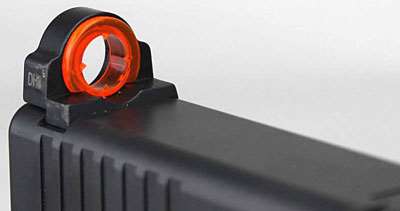
Swinging on steel targets left and right, the wide ring posts of the aperture eclipse the target briefly; but it’s not really a problem when shooting with both eyes open, and even with one eye closed it seems it wouldn’t matter much after some practice.
Dry firing, informal “drills” at the range and followed by competition, the aperture sight did not help bring the front sight into focus. However, it appeared to do what I’d hoped: eliminate the extra time needed to find and precisely align the front sight with a rear notch caused by presbyopia preventing a front sight focus. The reason appears to be because the entire front sight is exposed in the open aperture, compared to the standard sights where much of the front sight is “hidden” behind the rear sight blade. The end result is that the eye can “pick up” and align the front sight more quickly with the Snake Eyes.
Opinions
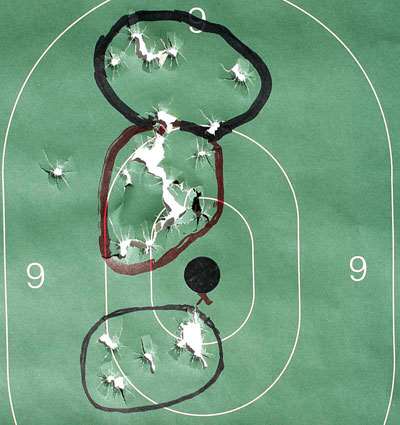
So, that’s what it comes down to: subjective opinion. An objective approach – perhaps comparing the scores of 10 matches using standard sights with the scores of 10 matches using the Snake Eyes sight – might show whether there is improvement in speed, but any conclusion would still not be definitive, as higher scores might be simply a matter of practice or other factors.
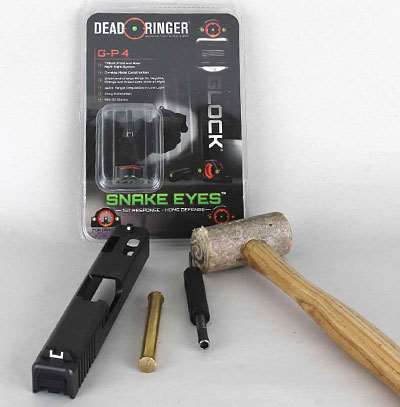
Dead Ringer makes Snake Eyes sights to fit Smith & Wesson, Ruger, Springfield Armory and other pistols. MSRP is $125. For more information visit www.deadringerhunting.com.













